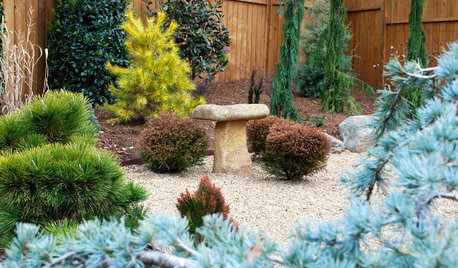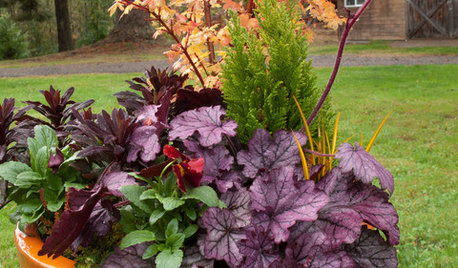Abies lasiocarpa in the East?
hairmetal4ever
10 years ago
Related Stories

PLANTING IDEASDesigning With Conifers: Personality and Form in the Garden
Unique and full of interest, well-shaped conifers await a place your yard
Full Story
LANDSCAPE DESIGNBoxwood Alternatives Bring the Chelsea Flower Show to You
Don’t let box blight limit your plans to borrow garden design ideas from the renowned British event
Full Story
FALL AND THANKSGIVING5 Container Gardens for Fall, the Holidays and Beyond
Make planting easy with a single container, year-round plants and a sprinkling of simple seasonal accents
Full Story
TREESHow to Buy Healthy Trees and Shrubs
A healthy young plant with a strong form is more likely to do well in your yard. Here’s what to look for at the nursery
Full Story










maple_grove_gw
davidrt28 (zone 7)
Related Professionals
Arlington Landscape Architects & Landscape Designers · Richmond Heights Landscape Architects & Landscape Designers · Washington Landscape Architects & Landscape Designers · Edmond Landscape Contractors · Tempe Landscape Contractors · Arlington Landscape Contractors · Columbine Landscape Contractors · Fort Hunt Landscape Contractors · Gallatin Landscape Contractors · Gurnee Landscape Contractors · Marlborough Landscape Contractors · Melrose Park Landscape Contractors · Peachtree City Landscape Contractors · Waipahu Landscape Contractors · Norridge Landscape Contractorshairmetal4everOriginal Author
davidrt28 (zone 7)
Smivies (Ontario - 5b)
hairmetal4everOriginal Author
davidrt28 (zone 7)
hairmetal4everOriginal Author
maple_grove_gw
bengz6westmd
Embothrium
hairmetal4everOriginal Author
Embothrium
salicaceae
maple_grove_gw
maple_grove_gw
davidrt28 (zone 7)
Embothrium
fairfield8619
davidrt28 (zone 7)
hairmetal4everOriginal Author
hairmetal4everOriginal Author
fairfield8619
davidrt28 (zone 7)
Henry Z6(OH Zone 6b)